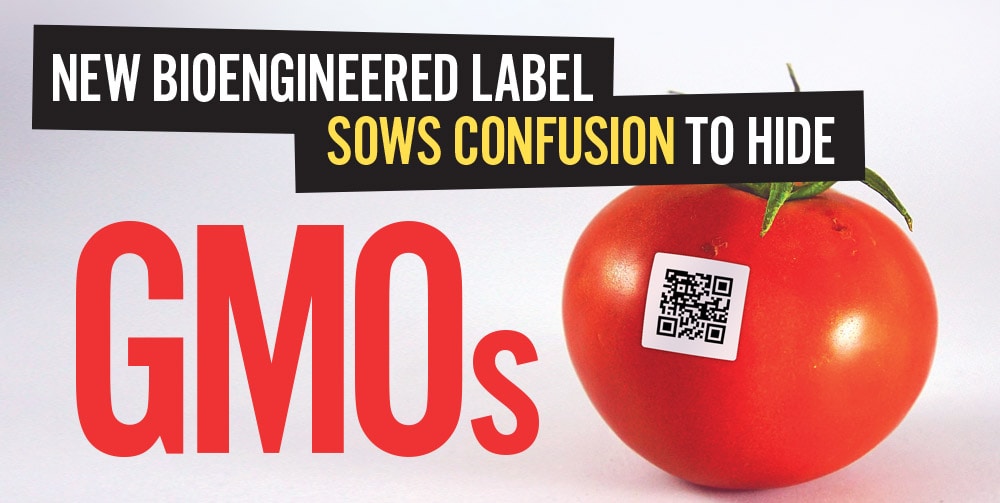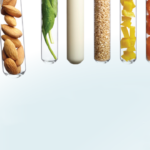
What's in a government-mandated food label? When seen on a product in the grocery aisle, does it give the consumer valuable information or does it create confusion? As is often the case when the government mandates new or different food-labelling practices, it isn't easy to predict the answers to such questions. That's why food producers and grocery shoppers alike are scratching their heads over the new "bioengineered" labels soon to hit store shelves in 2020.
The aim of designing the new bioengineered label was to create one national standard for GMO labelling instead of a dizzying array of labels.
We think the reason people are scratching their heads is because the law is flawed. The aim of designing the new bioengineered label was to create one national standard for GMO labelling instead of a dizzying array of labels. Many feel this is the excuse that was given by industry and government because the reality is that only one state had implemented a GMO labelling law. It was simple and modelled on other states’ proposed regulations. The proposed rule agreed that products containing GMOs simply stated “produced from genetic engineering” in plain text right on the package. Although a handful of states had passed such GMO labelling laws, Vermont was the only state that succeeded in implementing its law which went into effect on July 1, 2016.
As a result of Vermont’s law, food companies began to label GMOs on food products at the national level, to avoid having to create unique packaging just for Vermont. So there was not a patchwork of labels as was claimed by the industry as the reason for the new “bioengineered label.” Unfortunately, Vermont’s law was very short-lived, and following intense lobbying by the agribusiness industry, Congress swiftly passed federal legislation banning any state from passing a GMO labelling law. This federal legislation was dubbed by food transparency organizations as “the DARK Act” (Deny Americans Right to Know). Its official name is “The National Bioengineered Food Disclosure Law.”
A central concern of this new federal legislation is that it forces companies to use the confusing new term “bioengineered” instead of the well-known term “GMO” which is the terminology used globally (including by organizations such as the World Health Organization) and widely understood by consumers both here in North America and abroad. Do you wonder why would an industry want to introduce a brand-new term instead of using a widely established and understood word? And it is essential to know that ever since GMOs entered the market, polls have shown the vast majority of Americans and Canadians (over 90%) want to see these products labelled, just as they are in 64 countries around the world.
The word “BIOENGINEERED” is a new term that has not been used before.”GMO” is the terminology used GLOBALLY (including organizations such as the World Health Organization) and this term is well known to the American and Canadian consumer.
Let’s take a look at the facts behind the new “bioengineered” label and why it is problematic on many levels.
FIRST, instead of having to provide clear text identifying GMO content in food products – as is done in Europe – companies can instead opt for a symbol, a 1-800 number, or a digital QR code (the latter leaving over 100 million Americans who do not own smart phones in the dark).
SECOND, the majority of GMOs actually won’t be labelled because of provisions in the law that exempt highly refined products that contain GMOs, such as cooking oils, candies, and soda. Another concern is under the new regulations, the threshold for the unintended presence of GMO ingredients is set high at 5%. This percentage is five times higher than what the European Union allows, at 0.9%.
THIRD, instead of using the widely used and internationally recognized term “GMO,” the United States Department of Agriculture (USDA) has decided to create unnecessary confusion by forcing companies to use the term “bioengineered,” a previously unknown and unused word which is likely to confuse and mislead American consumers.
FOURTH, the new symbol identifying “bioengineered” content is far from neutral, picturing a bucolic green field that seems to directly imply that the product with the label is healthy or natural.
FIFTH, newer techniques such as gene editing, synthetic biology, and RNAi are not subject to labelling, and food serving establishments such as restaurants and food manufacturers making less than 2.5 million dollars per year are exempt from having to comply with the law, so once again, no disclosure.
The USDA has betrayed the public trust by denying Americans the right to know how their food is produced. Instead of providing clarity and transparency, the USDA has created large scale confusion and uncertainty for consumers, food producers, and retailers. Andrew Kimbrell, Executive Director, Center for Food Safety
Still, there are bigger questions. Does this new “bioengineered” label do anything to prove or disprove the safety of GMOs? The USDA itself says it doesn’t, noting that its task is labelling; it’s the Food and Drug Administration (FDA) that would need to rule on the health and safety questions. Food manufacturers who have been certified organic are exempted from the labelling rule, since organic certification already strictly prohibits the use of any GMOs.
The new labelling requirement applies to all, but the smallest food manufacturers. Participation is voluntary for those manufacturers under $2.5 million in annual receipts. All of this may seem straightforward, but as in most things, the devil is in the details. For example, how far up the food chain should the labelling requirements go? Some organic food purveyors think it’s inappropriate that the USDA intends to allow egg producers to avoid “bioengineered” labelling when they’re feeding their chickens GMO feed. Others complain that food manufacturers can effectively avoid labelling bioengineered ingredients simply by putting enough meat or egg in it, to list first in the ingredient panel.
Lastly, critics wonder if the new label will really meet its goal of consumer education, especially if many manufacturers opt to offer “more information” to shoppers via a QR code instead of a clear text label. The USDA itself acknowledges that 85% of consumers are unaccustomed to that weird pattern of lines and squiggles, aka the QR code, but what’s worse is they don’t have a clue how to use it! Inaccessible information is the same as no information at all, say critics. To offer true transparency the industry needs to give the consumers information they want and simply label genetically modified food, just as they are in 64 countries around the world.
The new bioengineered law and label was created and designed by the GMO industry, to benefit the industry, not the consumer. Consumers should familiarize themselves with the new “bioengineered” logo and understand “bioengineered” is now the new term used by food companies to replace “GMO.” The new bioengineered law has many flaws and loopholes. When buying food, the best way to avoid GMOs is to buy non-GMO Project Verified foods and “certified organic.”
For dietary supplements, look for the ISURA seal of quality. When you see the ISURA Seal of Approval on a product label, it means that the product has undergone a stringent battery of laboratory tests to confirm that its ingredients are:
- Non-GMO compliant
- Contaminant free
- Adulterant free
- Authenticated, and accurately and inclusively labelled














